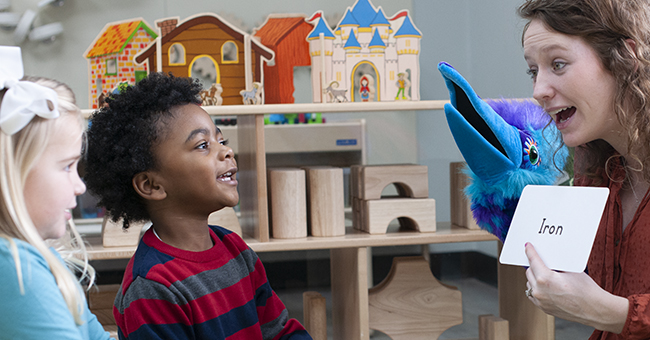
Please note, this is the second installment in Dr. Tonia Durden's blog series Times Up!: Be Equitable. If you're new to this series, we recommend that you first read A Shield of Armor.
Hello early childhood professional, meet Sam!
Sam's use of aggressive behavior has been a challenge for the past month. Just yesterday Sam kicked and injured a classmate on the playground, and unfortunately, these types of incidents have become more frequent. Sam's teacher, Arlene, feels as though the problem is that Sam has no home training and doesn't know any better so she dismisses Sam's behavior and hopes that Sam will get better soon.
What are the images of Sam that came to your mind? Is Sam a boy or girl? How old is Sam? What is Sam's race? What languages does Sam speak? What is the social-economic status of Sam's family? Who are the members in Sam's family?
To be equitable in our interactions and engagement with young children is to have the will and understanding of when we are not equitable—even in our thoughts and immediate images of children—like in the case of Sam. As a matter of fact, inequity in action usually manifests from the prejudices, stereotypes, and biases that we hold about ourselves and others. Prejudice is a noun that means to have an unfavorable opinion or belief about someone without even meeting or knowing them. A stereotype is a widely held view about a particular type of person which is often what individuals use as justification for their prejudice. Lastly, the term bias as a noun represents our prejudices that are in favor of or against a group of people, and as a verb is when we show our preference or prejudice for or against someone.
The biases that we all bring to the classroom inevitably leads to actions and interactions with some children that unfortunately perpetuate the -isms we see in society: racism, sexism, ageism, classism, etc. There is an abundance of research that documents how Black and Brown children are disproportionately impacted by -isms in the early childhood classroom and beyond.
So how do we begin as early childhood professionals to "be aware" and confront our biases before they lead to -isms and inequity?
Here are three key next steps:
- Be aware: Take a moment each day before and after engaging with young children and families to identify the emotional and mental connections you have with each child you serve. Ask yourself, who is the most favorable child and why? What child(ren) elicit a negative trigger or response from me?
- Be critical: Once you reflect on your biases about the children in your care (favorable and unfavorable), engage in readings, professional development experiences, courageous conversations with colleagues and others about anti-bias, anti-racism, and culturally relevant education.
These readings are a good place to start:
- Be equitable: Take explicit steps to improve your teaching and learning of children by documenting how you are being equitable (or not) and constantly reflecting on your biases, prejudices, and stereotypes.
While these steps may seem easy enough, it takes time, commitment, and honesty to really unpack the lifelong biases that create "blind spots" for us in which we often, even in our best efforts not to, still perpetuate racism, sexism, and classism in our engagement and work with young children. As in the case of Sam, it doesn't matter how Sam is a little White girl from a two-parent, upper middle-class family. Instead, what matters is your initial perception and image of Sam and a critical reflection of why such images came to mind—Was it a result of your own prejudices, stereotypes, and biases, or was it rooted in experience because you teach or know a Sam?
I do hope that you stay tuned for the next topic in this Be Equitable series titled Be Intentional: Culturally Relevant Teaching which will focus on ways, as early childhood professionals, we can implement high-quality teaching and learning experiences for children that is culturally relevant, responsive, and meaningful.
About the Author
Tonia Durden, PhD, is a clinical associate professor of early childhood and elementary education and is a program coordinator at the Georgia State University College of Education and Human Development. She is also a co-author of the book Don't Look Away: Embracing Anti-Bias Classrooms.
Explore This Series
A Shield of Armor
Be Intentional: Culturally Relevant Teaching — My Culture
Be Intentional: Culturally Relevant Teaching — My Beliefs
Be Intentional: Culturally Relevant Teaching — My Teaching
References
Iruka, I., Curenton, S., Durden, T.'Escayg, K.A. (2020). Don't Look Away Embracing Anti-bias Classrooms: Gryphon House. Lewisville, NC.
Mun Kok, C., de Guzman, M., *Garcia, A., Durden, T., Guzman, J., Potthoff, K., Johnston, C. (2016, January). "Say What?": Understanding, Identifying, and Addressing Microaggressions, Interactive Community Lesson. University of Nebraska-Lincoln Nebraska Extension: http://extensionpublications.unl.edu/assets/pdf/hef616.pdf
